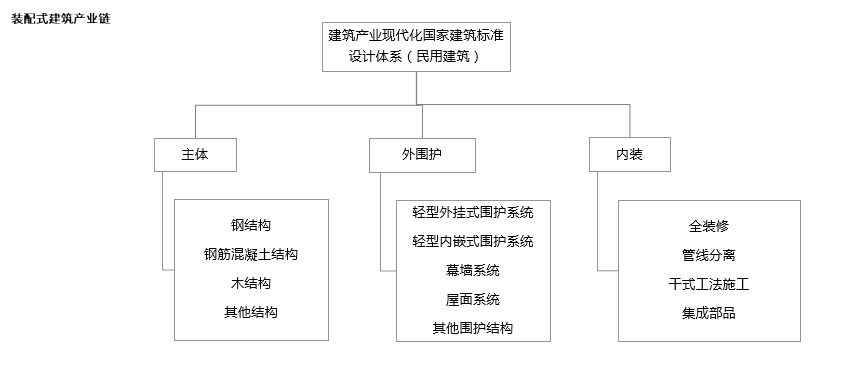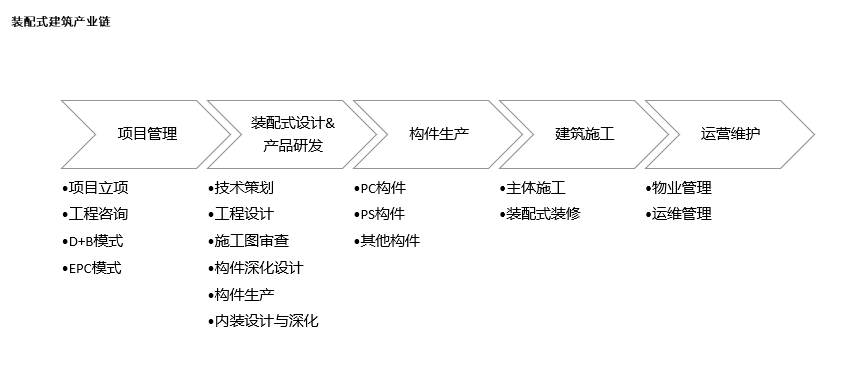2021 is the first year of the 14th Five-Year Plan. As far as prefabricated buildings are concerned, they have entered the "second half" of the ten-year top-level plan to vigorously develop prefabricated buildings at the national level. After the exploration and practice during the "13th Five-Year Plan" period, prefabricated buildings have entered the stage of accelerating development and improving quality. In March 2021, the two sessions of the National People's Congress (NPC) and the National Committee of the Chinese People's Political Consultative Conference (CPPCC) wrote "peak carbon dioxide emissions and carbon neutrality" into the government work report for the first time, formally opening the prelude to the year of concrete implementation of the "Peak Carbon Dioxide Emissions and Carbon Neutrality"-China's carbon dioxide emissions strive to reach their peak by 2030 and strive to achieve carbon neutrality by 2060.
As one of the three major energy consumption industries, energy saving and emission reduction in the construction industry is a very important part to help achieve carbon neutrality. It is necessary to promote the green and low-carbon development of the whole industry chain of the construction industry from the whole life cycle of building materials production, construction, operation and maintenance.
The new type of construction industrialization is driven by the new generation of information technology, taking the systematic integrated design and lean production and construction as the main means, integrating the whole industry chain, value chain and innovation chain of the project, and realizing the construction industrialization with high efficiency, high quality, low consumption and low emission.
The development of prefabricated buildings in China:
Taking China's 13 five-year plans as the stage division, China's construction industrialization is generally divided into four stages of development:
Initial stage of construction industrialization: from 1953 to 1975;
Fluctuation period of construction industrialization: from 1976 to 1995;
Upgrading stage of construction industrialization: from 1996 to 2015;
Great development stage of construction industrialization: from 2016 to now.
In order to vigorously promote the development of prefabricated buildings, all provinces, municipalities and autonomous regions have introduced corresponding target response and incentive policies, giving incentives in terms of floor area ratio, advance pre-sale and land price subsidies to projects in the prefabricated building forms, so as to promote the sound development of prefabricated building market in all aspects.

Analysis of prefabricated building industry chain
According to the Outline of Modernization Development of Construction Industrialization, the design system of civil architecture can be divided into three parts:

Adhering to the concept of sustainable development and circular economy, prefabricated buildings upholds the policy of "four saving and one environmental protection" at all stages from technical research and development, technical consultation, planning and design, factory production, component transportation, component hoisting and on-site construction, indoor and outdoor decoration, marketing, property management, demolition and scrapping to the final recycling of construction waste, and build a "green" prefabricated building industry chain. Its total life cycle is roughly divided as follows:

According to the industrial chain, prefabrication can be simply divided into three links, namely upstream design and development, midstream component production, and downstream construction, operation and maintenance. The upstream includes technology research and development, technical consultation, planning and overall design; the midstream includes factory production of component parts, component hoisting and on-site construction, indoor and outdoor decoration; the downstream includes marketing, property management, demolition and scrapping, and recycling of construction waste. The integrated development among the upstream, midstream and downstream industry chain carries out the circular exchange of material, energy and information, and jointly pursues the maximization of economic, environmental and social benefits.
In terms of prefabricated buildings, considering that the EPC mode is vigorously promoted by policies and the strong ability of central and state-owned construction enterprises to receive orders, general contracting is still the trend, but the professional boundaries of each link under the prefabricated model are clearer, the status of design and processing links is improved, and the profit ceiling is higher, and more excellent private enterprises are expected to emerge.
Since prefabricated decoration is similar to traditional full decoration technology, and the main barrier is still management, the main players in the industry still are traditional decoration enterprises, such as Yaxia, Gold Mantis, Trendzone and so on, other than the prefabricated decoration enterprises that have been developing for many years. However, benefiting from the more large-scale and standardized production process, the industry concentration is expected to increase, and the market space of the leader may be further opened.
Technically, the application of BIM technology is also indispensable in the prefabricated building industry chain. BIM technology is applied to planning and decision-making, scheme design, construction process simulation, building materials management, building collision detection, etc. As the integration point of the whole construction process and all-round information, BIM technology covering design, production, design and decoration runs through the whole process of prefabricated buildings.
Analysis of industry status
China vigorously promotes the industrialization process, and the provinces and cities also respond positively. From the perspective of prefabricated buildings, compared with traditional construction buildings, prefabricated buildings have the advantages of high standardization, construction time saving, four saving and one environmental protection, and good quality. The specific comparison is as follows:

But the pain point is also obvious:
The first is insufficient policy support. Although the government has vigorously promoted prefabricated buildings in recent years and set up some pilot cities and industrial bases, some policies are not conducive to the promotion of prefabricated structure system. For example, PC components are regarded as commodities, and the tax rate is much higher than that of other building materials.
The second is the lack of a technical standard system of prefabricated buildings. A complete standard system for prefabricated assembly technology has not been formed, standards in the design, production, construction and acceptance of buildings are lacking, no quota is available for prefabricated construction in the market for reference, and there is a lack of construction units that can master assembly construction technology skillfully.
The third is imperfect upstream and downstream industry chain. The production process of prefabricated buildings includes the early R&D and design of building products, construction and later operation and maintenance. The enterprises involved include owners, design units, component production factories, construction units, etc. All upstream and downstream enterprises form a complete industrial chain, but now the industrial chain of building products is not mature enough.
The fourth is relatively high cost of prefabricated construction projects. The main reason for the high price of prefabricated components is the large one-time investment in the construction of component production bases and the high amortization cost of components. The low degree of standardization of component production and the arbitrary price increase of components by component manufacturers have resulted in the high price of prefabricated components, and the pilot project of prefabricated building structure system is difficult to operate in coordination with project design, production and installation. At the same time, due to the small number of relevant technical personnel and professional manpower, the labor cost of prefabricated buildings is higher than that of traditional construction methods, which is more unfavorable to the development of the market.
Future outlook
According to the Outline for the Modernization of the Construction Industry, prefabricated buildings will account for more than 50% of new buildings by 2025, and the proportion of prefabricated construction in affordable housing projects will reach more than 60%. Finished housing will be fully popularized. The area ratio of newly constructed and fully decorated finished houses is more than 50%, and the area ratio of fully decorated finished houses of security housing is more than 70%.
Prefabricated building: In the next five years, the compound growth rate of the industry may reach 20%. Assuming that the annual growth rate of new construction area from 2020 to 2025 is 5%, and the penetration rate of prefabricated building will increase by 3 percentage points annually, it is estimated that by 2025, the national prefabricated building area will reach 2.071 billion square meters, with a compound growth rate exceeding 20%. According to the quotation of 2300 yuan per square meter, the market size is nearly 5 trillion yuan.
Prefabricated decoration: The public building market is top priority, and residential buildings need to be developed. At present, prefabricated decoration is mainly applied in public buildings such as security housing, long-term rental apartments and hotels. The annual compound growth rate of the prefabricated decoration market for new long-term rental apartments in China is about 18%, and the annual market size is more than 100 billion yuan. The market scale of prefabricated decoration of hotels is about 40-60 billion yuan. Therefore, it is expected that the market of prefabricated decoration in the field of new residential buildings will continue to grow, and the market capacity is about 500 billion yuan in 2025.
In the light of present situation, the new industrialization road advocated by the state will not change, and the prefabricated building will definitely be the trend in the future.











